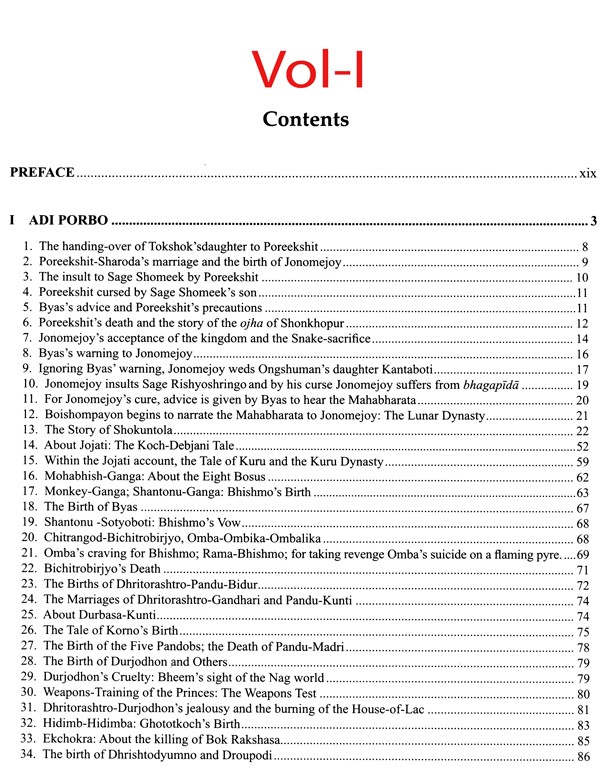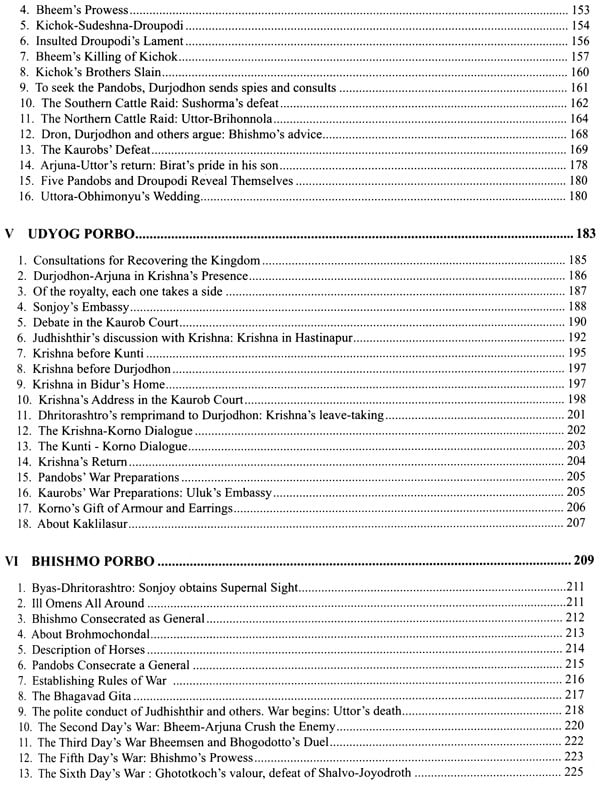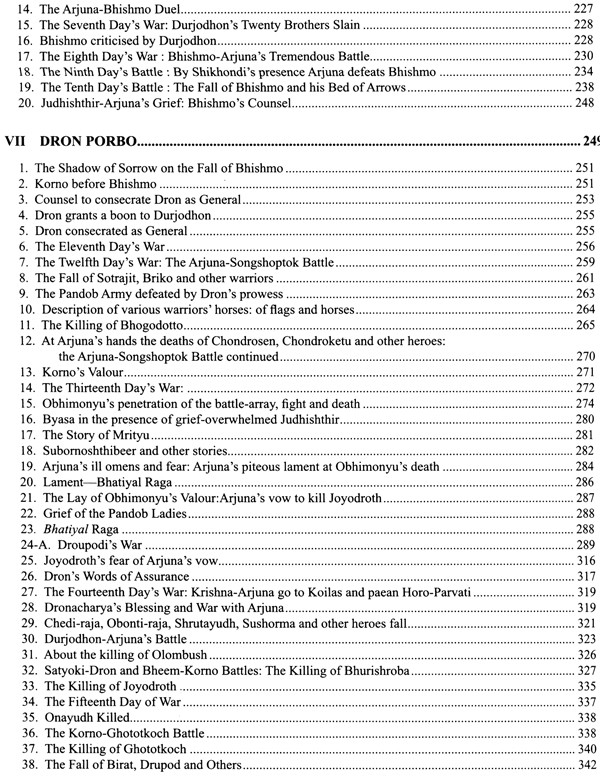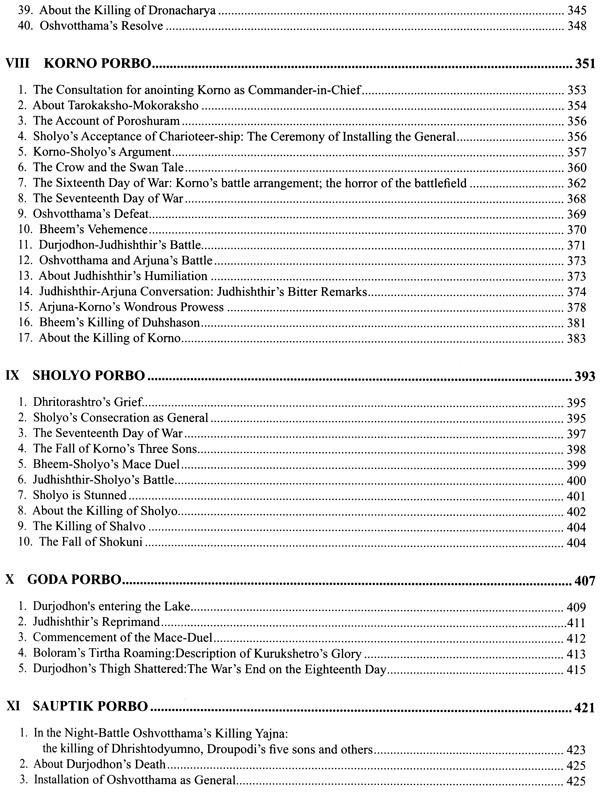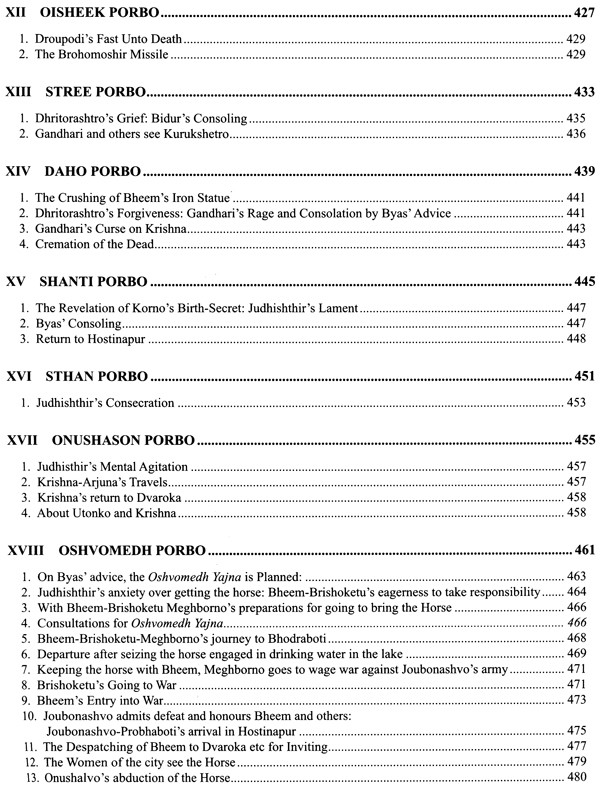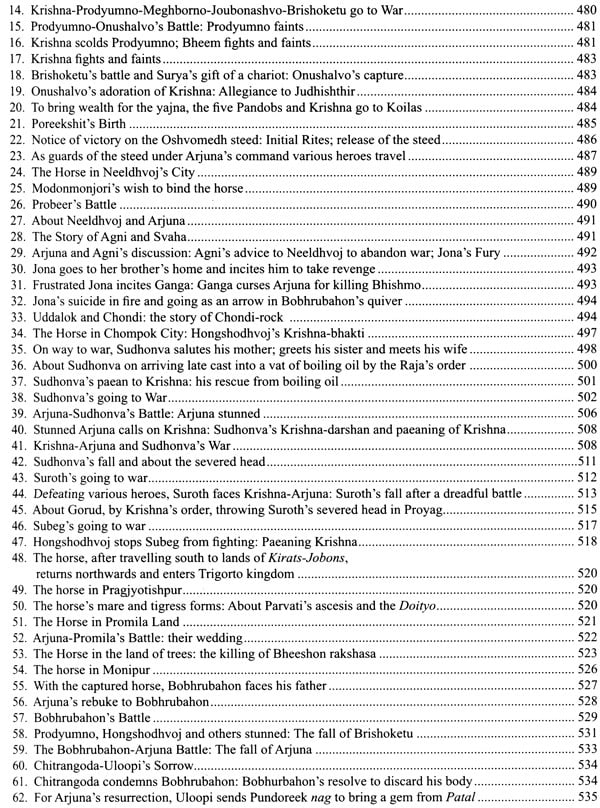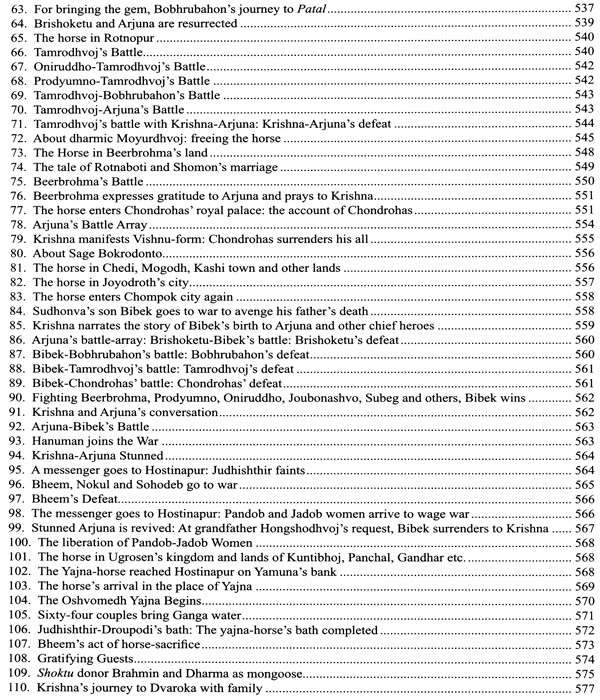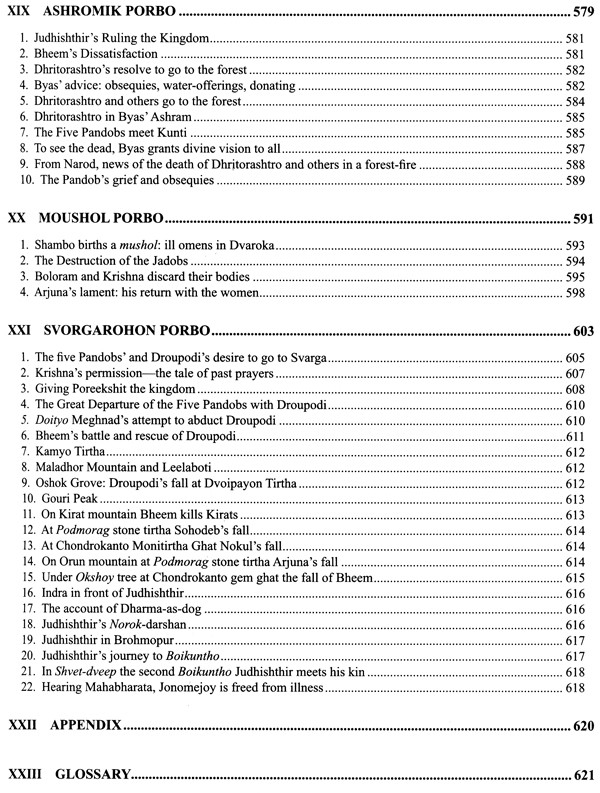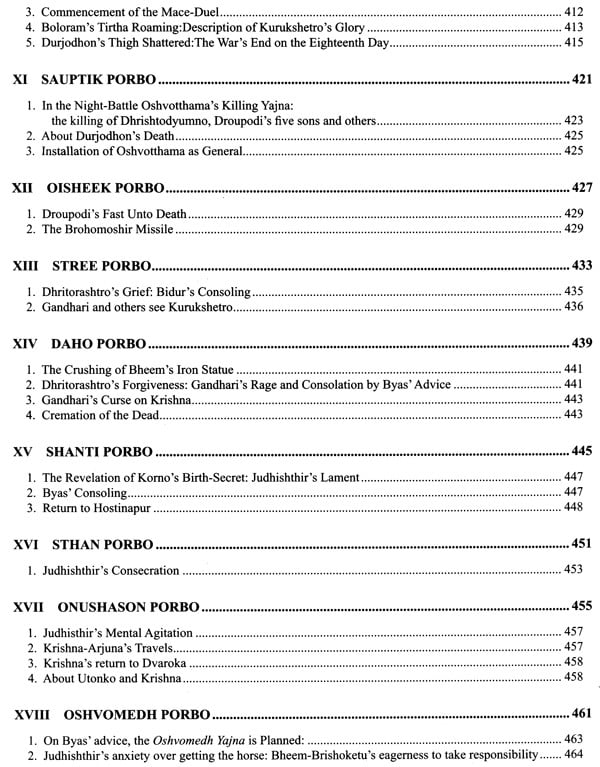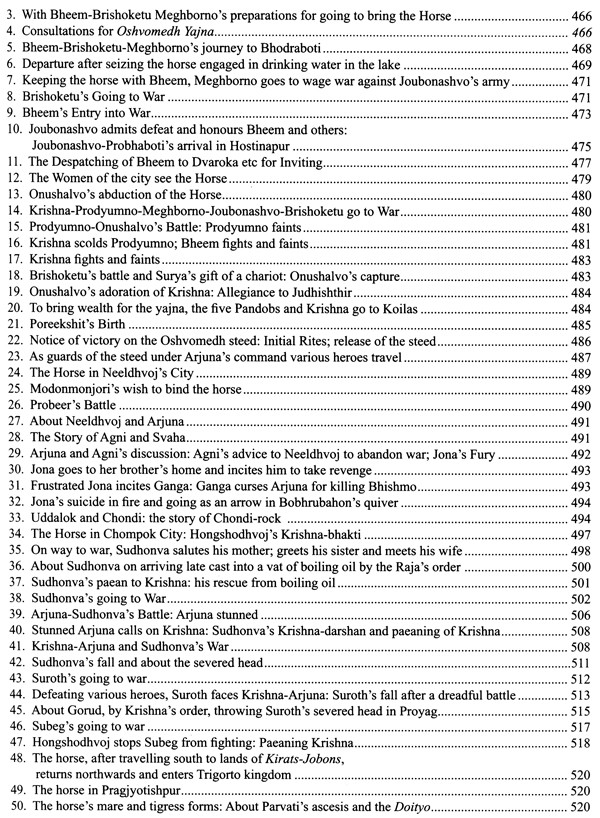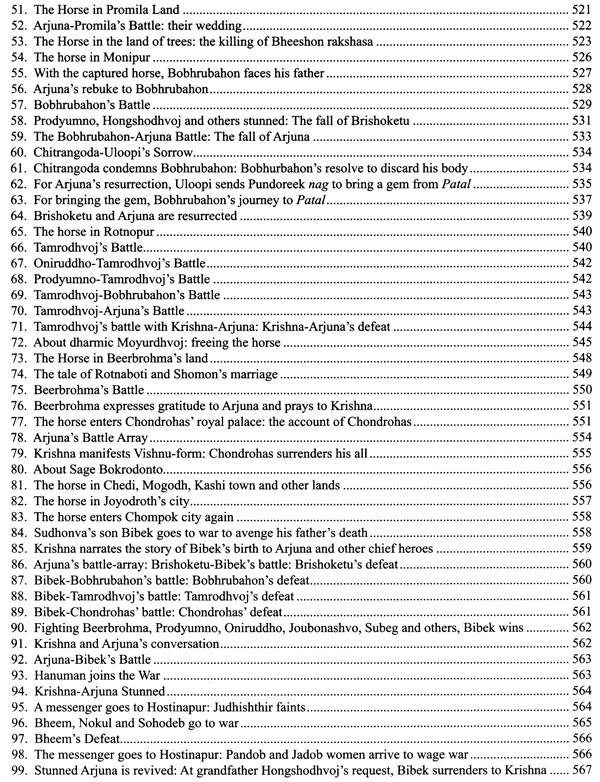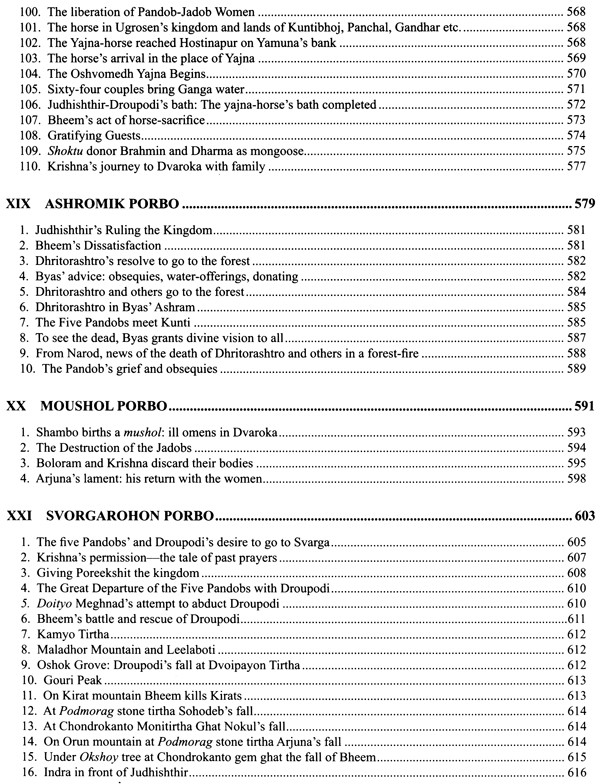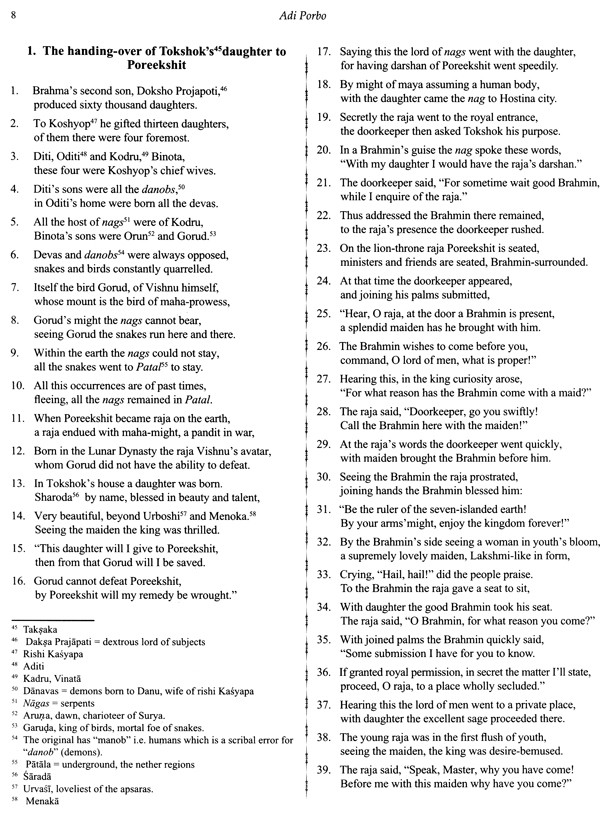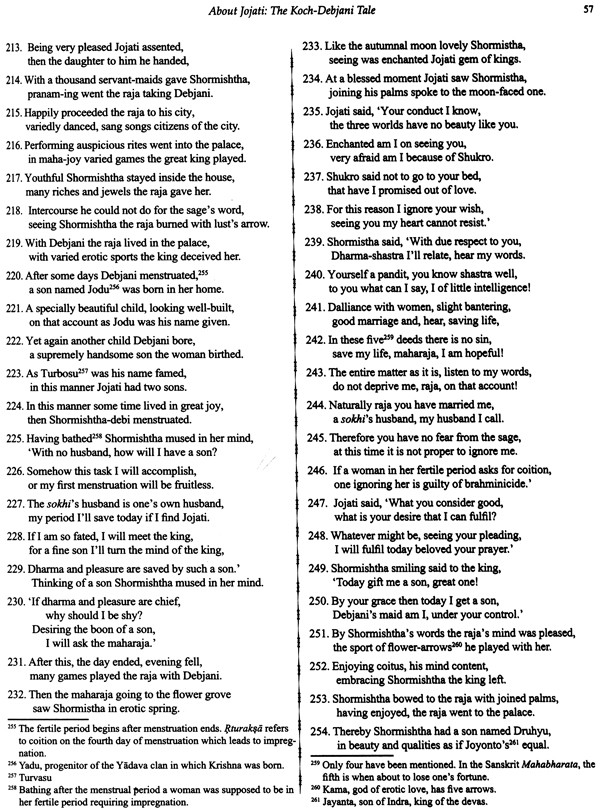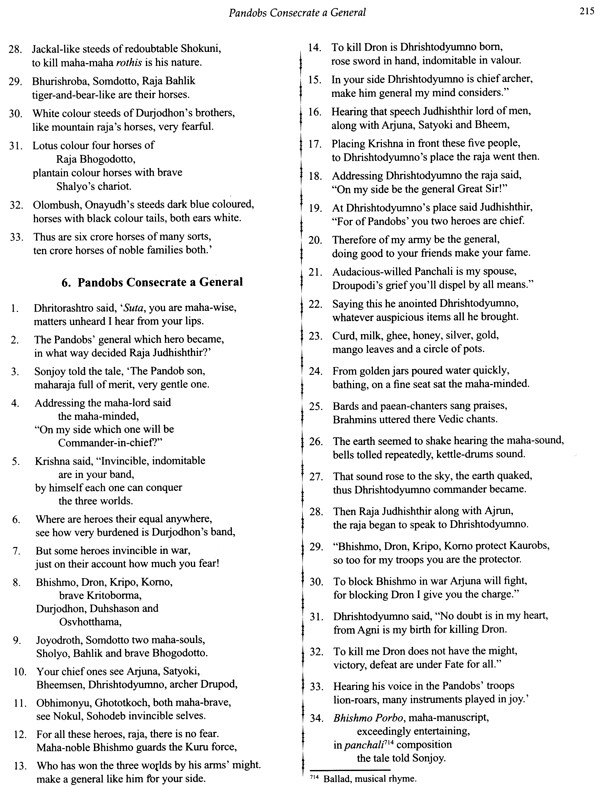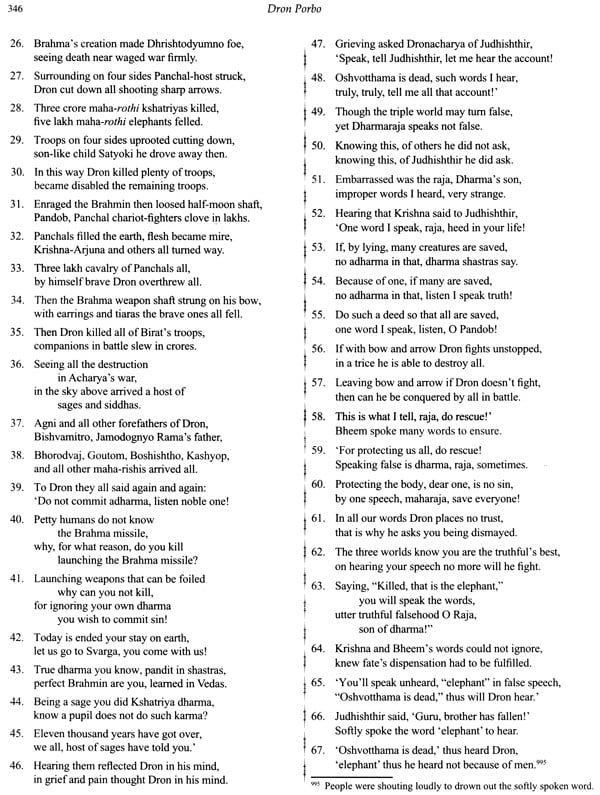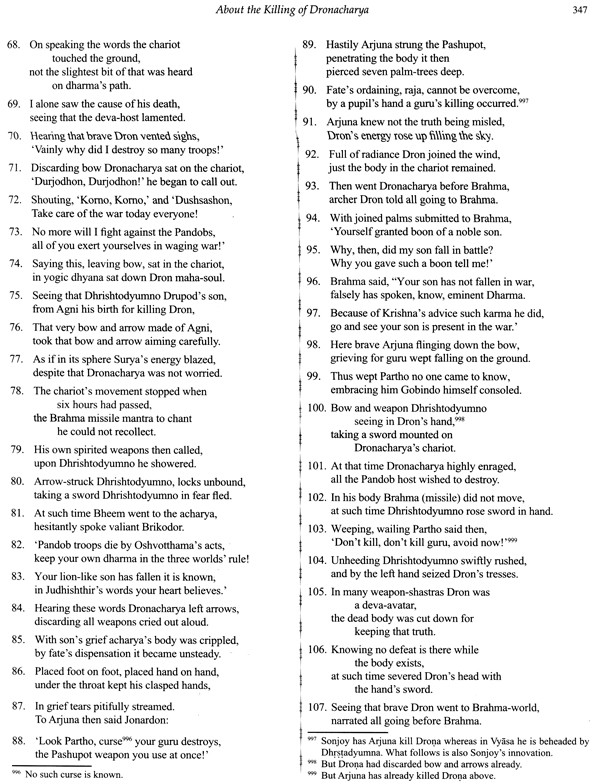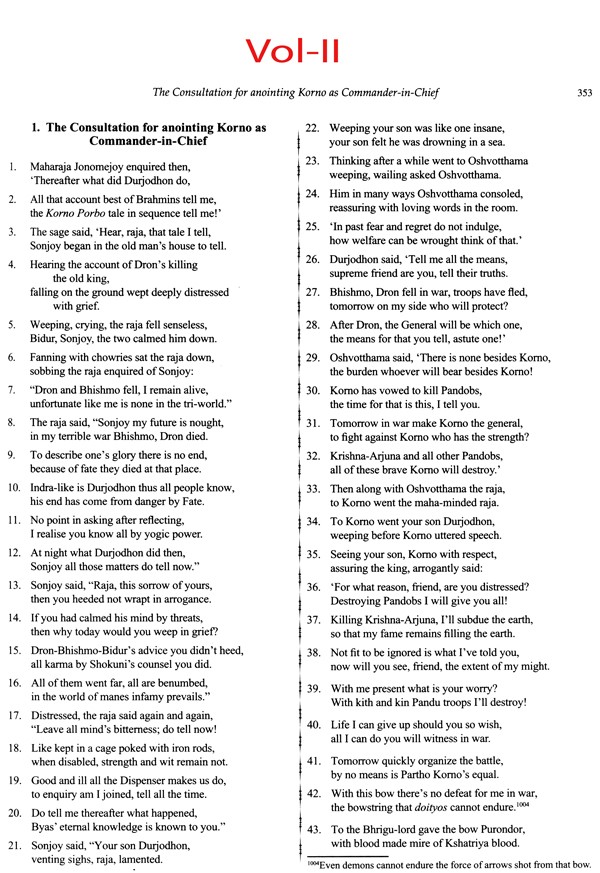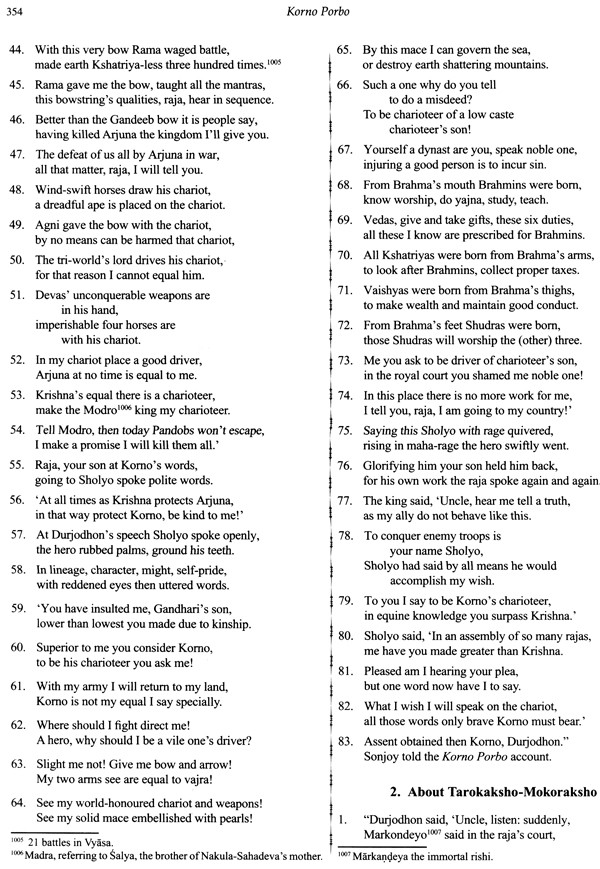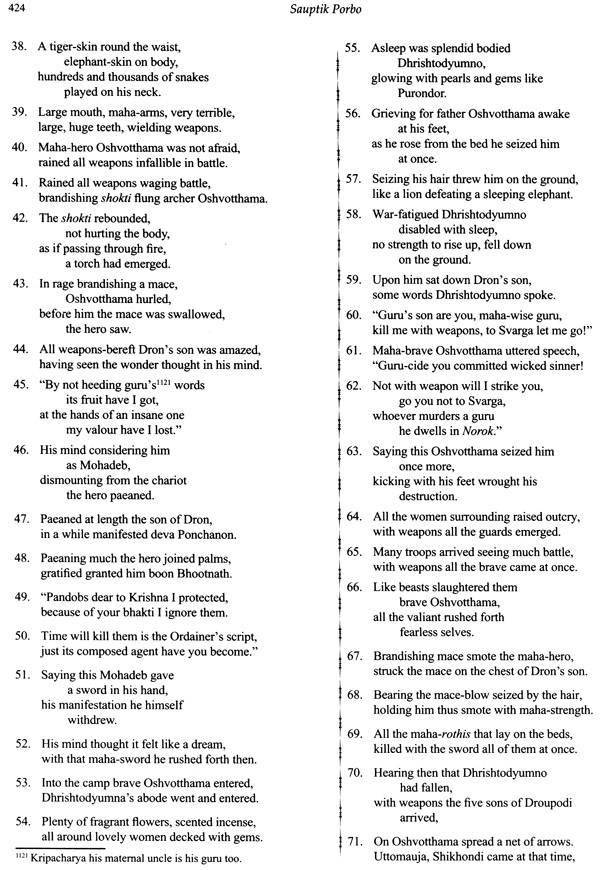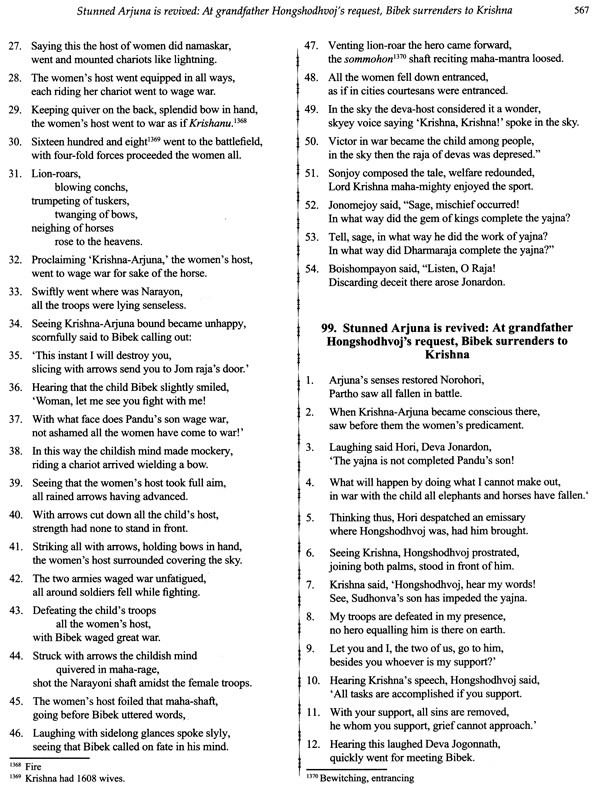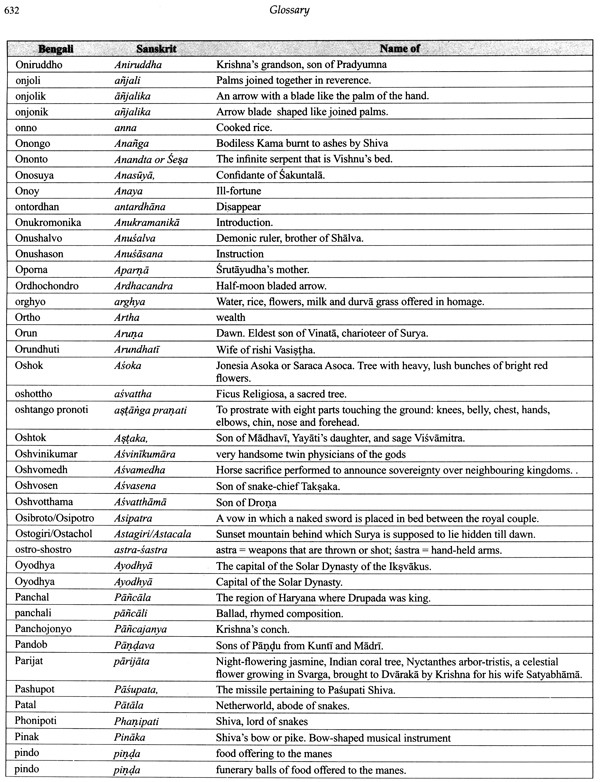
The Mahabharata Of Kavi Sanjay (Set of 2 Volumes)
Book Specification
| Item Code: | NBZ668 |
| Author: | Kavi Sanjay |
| Publisher: | Dasgupta & Co. Pvt. Ltd. |
| Language: | English |
| Edition: | 2019 |
| ISBN: | 9788194161417 |
| Pages: | 0.664 |
| Cover: | HARDCOVER |
| Other Details | 11.00 X 9.00 inch |
| Weight | 2.18 kg |
Book Description
The composition was a recital interspersed with song and dance.
He created a new genre, the Pauranik fairy tale, omitting philosophical discourses and adding unique inventions, such as Draupadi and the Yadava women defeating the Kauravas in war, the story of Jona that Girish Ghosh turned into a famous play, etc.
In the 15th century, a literary phenomenon emerged in eastern India that became prominent by the 16th century not only in the East but also in the South. In the 15th century, the Sanskrit Mahabharata was retold in Bengali by Kobi Sonjoy, in Kannada by Kumara Vyasa (ten books only), in Odiya by Sarala Das, and in the 16th century in Assamese by Rama Sarasvati and in Malayalam by Ezhuthachan. None of these (except the Malayalam) were complete translations. Rather, they were adaptations, consider- ably reducing the massive bulk of the original Sanskrit composition by omitting lengthy philosophical discourses while freely adding material from local lore. The reason for this remarkable synchronicity in eastern India could be the felt need to assert indigenous identity in the context of Muslim invasions.
However, that calls for further study. For the present, let us look at the picture in Bengal.
According to Dinesh Chandra Sen, it was a Muslim ruler of Bengal, Sultan Nusrat Khan or Nasir Khan (1285?-1325) who commissioned the first translation of the Mahabharata into Bengali named Bharat Panchali, panchali signifying the Bengali language. The work is not traceable but Kobindro Poromeshvor (early 16th century) states in his Bengali Mahabharata: "The glorious leader Nasrat Khan had the panchali composed, the ultimate in merit." However, history is ignorant of any sultan of Bengal by this name who ruled for forty years. Examining the evidence, S.K. Sen (2008: 61) suggests that the reference may actually be to Nasiruddin Nusrat Shah (1519-1531) who succeeded his father Sultan Hussain Shah of Bengal (1493-1519). Nusrat Shah went to Chattagram (Chittagong) with general Paragal Khan as the king's representative in 1515-1516. Paragal became governor there and got the Mahabharata condensed into Bengali, so that it could be heard in a single day, by Kobindro Poromeshvor who completed it up to the Ashvamedha Parva (Ghosh 1969: 152, the later parvas being interpolations). This came to be known as the Poragoli Mohabharot and also as Pandob-Bijoy (Bando- padhyay 2006: 441-42). It·includes, basically, the battle stories, especially in the Ashvamedha Parva which draws on Jaimini's version, omitting most of the incidents of Vyasa's composition. Hussain Shah was a distant ruler while Nusrat, the crown prince, was a powerful patron at hand in Chittagong, as is evident from the verses of Shrikor Nondi. Kobindro would be referring to this Nusrat and to Shrikor's panchali, not to an older unknown ruler and poetic work. Paragal's son, Chhuti Khan, succeeded him as governor and got the Jaiminiya Ashvamedha Parva translated by Shrikor or Shrikoron Nondi, which came to be known as Chhuti Khaner Mohabharot. Parts of it were included in the later Kashiram Das Mohabharot (17th century).
Like Pampa in Kannada and Nannaya in Telugu, Kobi Sonjoy was Bengal's Adi Kavi, the first poet to write in Bengali and the first to translate the complete Mahabharata into panchali (Bangia) for rustic audiences, using the poyar metre (each line of the rhymed couplet consisting of eight syllables followed by a caesura and six syllables) unique to Bengal. He states that as Vyasa's composition remained shrouded in darkness being in Sanskrit, its salvific nectar not available to the public, he translated it into Bangia to succor the sinful. M.K. Ghosh (Ghosh 1969: 123, 153), editor of Sonjoy's work, dates it to the first half of the 15th century, before Chaitanya (1486-1533) and prior to the rule of Sultan Hussain Shah in Bengal (1494-1520) being devoid of any trace of Vaishnava bhakti that permeates old Bengali literature. Instead, it contains several unusual Shakta-infiuenced episodes such as the attack on the Kauravas and on Bibek by the Pandava and Yadava women in Kurukshetra and elsewhere. Ghosh appears to have overlooked the numerous references to the supreme divinity of Krishna and his miraculous prowess that we come across, particularly in the Ashvamedha Parva.
Dinesh Chandra Sen feels that Kobi Sonjoy was possibly a contemporary of Krittibas, the translator of the Ramayana, not later than the 15th century (Ghosh 1969: 153). However, on the basis of language and style other scholars prefer to place him in the 17th century (Bandopadhyay 2006: 462). Other composers of the Mahabharata in Bengali were Digvija Abhiram, Debakinandan, Ramchandra Khan, Nityananda Ghosh, Nandaram Das, Ananta Mishra, Dija Gobardhan, Rajaram Dutta, Shoshthibor Sen, Kobi Chandra, Bhabani Das, Dvija Shrinath etc. in the 17th and 18th centuries CE.
A resident of Laura village in the Sunamganj subdivision of Shrihatta (Sylbet) district in north- eastern Bangladesh, Sonjoy was a Brahmin pundit of the Bharadvaja gotra as he himself states in couplets (bhonita) rounding-off various chapters or books. Laura is famed as the birthplace of Catania’s companion Advaitacharya. Sonjoy praises Bhagadatta as the ruler of Laura and also calls him ruler of 'Banga-desh' although the Sanskrit Mahabharata does not do so. This is because Shrihatta was part of Bhagadatta's kingdom of Pragjyotishpura (modem Assam). Sonjoy departs quite freely from the Sanskrit epic's contents unlike Kashiram Das, a later and much better known translator. The narration is interspersed with family (couplets of twenty syllables sung, accompanied by dance) to be sung in various ragas and regains indicated in the text such as Basant, Kamod, Bhatiyal, Shri, Barari and Pathamanjari. It is clear, therefore, that Sonjoy's composition was a recital interspersed with song and dance. Sonjoy is the only poet rendering the Mahabharata into a regional language whose composition owes nothing to the patronage of a ruler.
Book's Contents and Sample Pages
